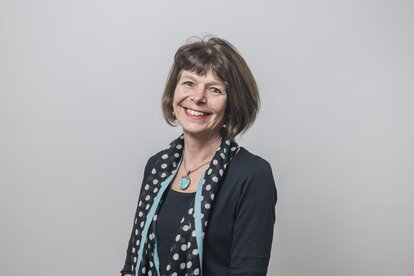It was last Saturday that the first earthquake struck, and one week on, many communities are reportedly still without assistance. There is a general perception that much initial support focused on Kathmandu at the expense of more remote rural areas. However, at least in Gorkha and Sindupalchowk, we know that immediate relief is getting through. This morning our Deputy Director Mona Sherpa reported that a total of 3,132 tarpaulins had been procured, of which 3,012 had been dispatched and 120 were waiting to go out with the next vehicle. All those distributed went either to Sindhupalchok (1,992) or Gorkha (1,080) with the exception of 20, which were given to staff members who were themselves in great need.
We are now also receiving photos from our teams; the scene pictured above shows tarpaulin distribution taking place at Talamarang in Sindhupalchowk district. Priority is being given to women and members of the Dalit community (so-called “low castes”); in Amppipal in Gorkha district, our team reported that even quite elderly people aged 60-70 had travelled long distances on hearing that distribution was taking place. One Dalit woman, whose house is in total ruins, apparently burst into tears when she was given the tarpaulin. Even with it, she was worried about getting sick. Nevertheless, she is reported to have said, ‘I am happy to know that I will survive now. There have been helicopters hovering above us but no relief supplies were dropped – what we are receiving from you is the first support we got.”
Our teams are particularly conscious of the needs of women in this very difficult time. As mentioned in an earlier posting, it is a known fact that women tend to be worse hit by disasters than men, with some Asian disasters – such as the 2004 tsunami, the 2013 Pakistan earthquake, and the Bangladesh cyclones – showing striking gender differences in mortality rates. (The statistic that sticks in my mind is that deaths of women outnumbered those of men by 14 to one in the Bangladesh cyclone of 1970). In the current disaster in Nepal, differences in men and women’s mortality seem to be less, although reportedly still higher amongst women. We are especially trying to respond to the needs of pregnant women, there being concern that they may miscarry. This has already been observed amongst pregnant livestock that survived the terror of the quakes. We estimate that there are 20 – 25 expectant mothers in each VDC.
Local coordination continues to be another important feature of the relief effort. Here one helpful initiative of AIN (Association of International NGOs in Nepal) and the UN (United Nations) has been to map which agency is doing what and where. In Gorkha district, Helvetas and our Alliance 2015 partners People In Need (PIN) and Welt Hunger Hilfe are the designated coordinating focal point; we have thus compiled data on which areas are affected, to what extent, and the relief activities taking place. Procurement is being conducted jointly, in coordination with four collection centres. They are in constant action, and of course under heavy pressure to deliver.
There is news today from Gorkha district of another quake measuring some 5.0 or so on the Richter scale. It seems that some rescue workers have been caught in a landslide. All our staff are safe, but once again it is a reminder of the stress under which everyone is operating.


